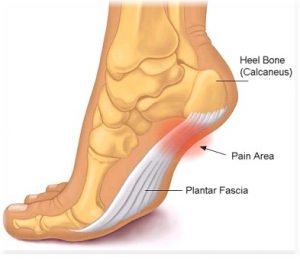Plantar fasciitis is one of the most common problem that affect the feet. As it is so common, everyone seems to have an opinion on it and there is so many misconceptions about it. As there is so much bad advice being given for it, there are so many cases of plantar fasciitis not getting better, so the field is ripe for snake oil salesman selling the next greatest cure for it.

Exactly what is plantar fasciitis? It is initially an inflammation of the plantar fascia which is a long ligament that connects the heel bone to the ball of the foot. After that initial inflammatory period, it then becomes a degenerative process. The cause is when the cumulative load on the plantar fascia is greater than what the plantar fascia can take, so it gets damaged. It is a problem of overuse of a “ligament” that can not take the loads. The typical symptoms of plantar fasciitis are pain under the heel that is usually worse after getting up from rest, especially in the morning after a nights sleep. While these same symptoms can be caused by other conditions, almost always these symptoms do indicate plantar fasciitis.
How should it be treated? The most obvious way is to go back to the above cause. Firstly you need to reduce the load on the plantar fascia with the use of calf muscles stretching, strapping of the arch and the use of foot orthotics and/or supportive shoes. This should start the recovery process. Once the very painful stage is over, exercises can then be used to strengthen the plantar fascia, so that it is better adapted to the load that is placed on it.
That is pretty much it. There are plenty of other approaches being advocated for plantar fasciitis, but they are mostly directed at healing the damaged tissues. There is nothing wrong with that, but the primary aim of whatever treatment is used should be to reduce the load in the damaged tissues and make the tissues stronger so that they can take the load.
{openx:878}